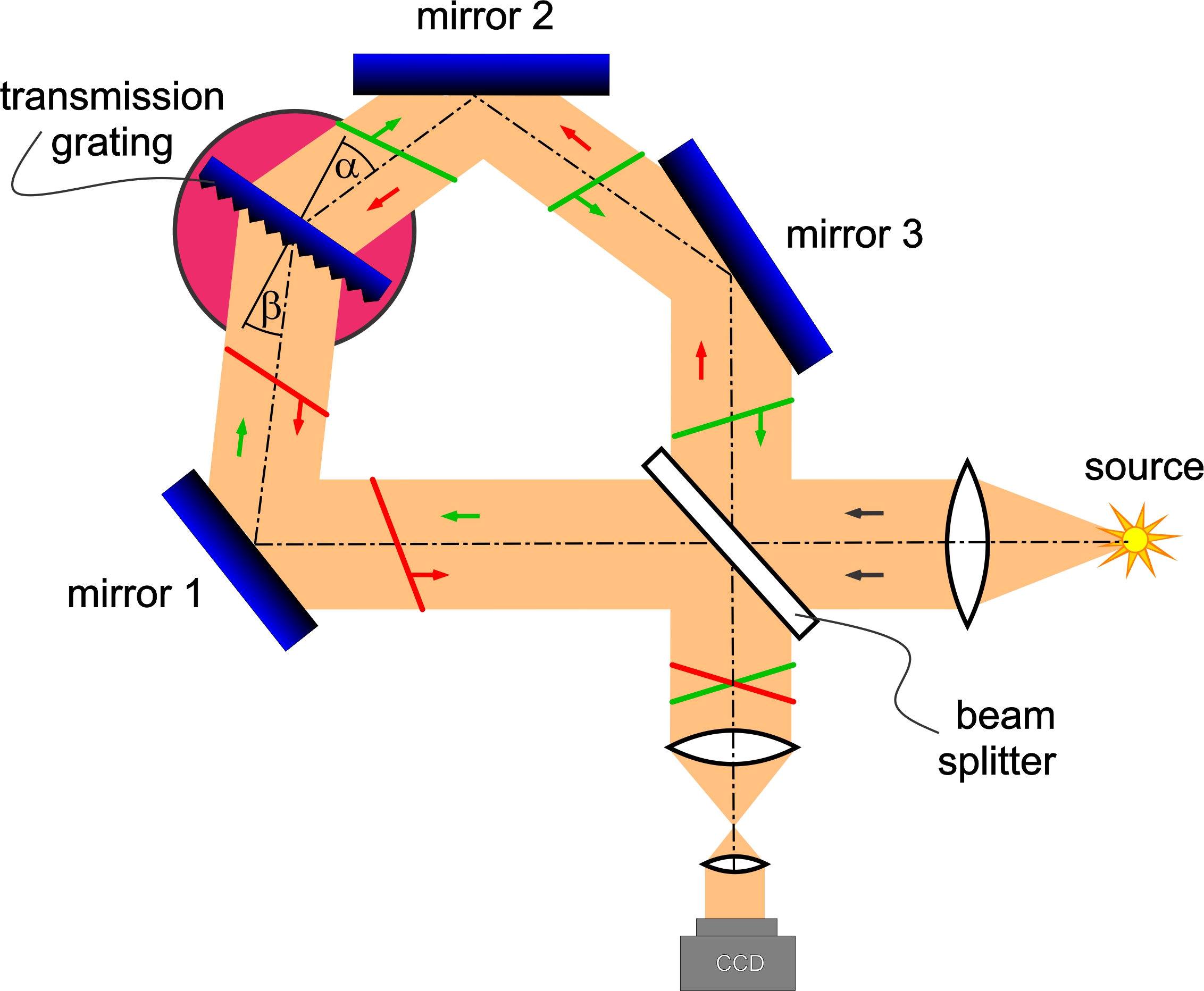
Basically,
we are looking at a Sagnac interferometer where one of the mirrors is
replaced by a transmission grating. Since the action of a transmission
grating is reversible, both directions experience the same diffraction
under the same angles at a given wavelength λ0.
At this wavelength, the setup works like a standard Sagnac
interferometer. For a single wavelength (with zero bandwidth) and the
device at rest, there is a homogeneously illuminated field in the
output arm (actually dark, since they are exactly 180° out of phase and
therefore interfere destructively). For wavelengths off this design
wavelength however, the propagation direction (k-vector) is under a
small angle to the optical axis, resulting in a tilted wavefront. When
these tilted wavefronts interfere in the output arm of the
spectrometer, they lead to Fizeau fringes. An odd(!) number of mirrors
causes the two wavefronts in the output arm to be oppositely tilted and
is therefore indispensible.
The
sign convention for transmission gratings is that angles on the same
side of the grating normal have the same sign on both sides of the
grating. Hence, in the figure above, both angles α and β
are positive WLOG. For the wavelength λ0+Δλ, the
spacing Δx of these fringes is:

where g is the groove density of the transmission grating. The wavelength λ0+Δλ is diffracted under the angle β, the angular dispersion is Δβ/Δλ = g/cosβ. That means, the angular dispersion (and the resolving power of the instrument) increases with the angle β, obviously only limited by the clear aperture.
References:
[2] M. Lenzner and J.-C. Diels "A Sagnac Fourier Spectrometer" talk FTh2C6, OSA conference "Fourier Transform Spectroscopy", Leipzig, Germany, November 14-17, 2016
[3] M. Lenzner "Sagnac Fourier Spectrometer (SAFOS)" US Patent Application 15/341,104, filed on 11/2/2016